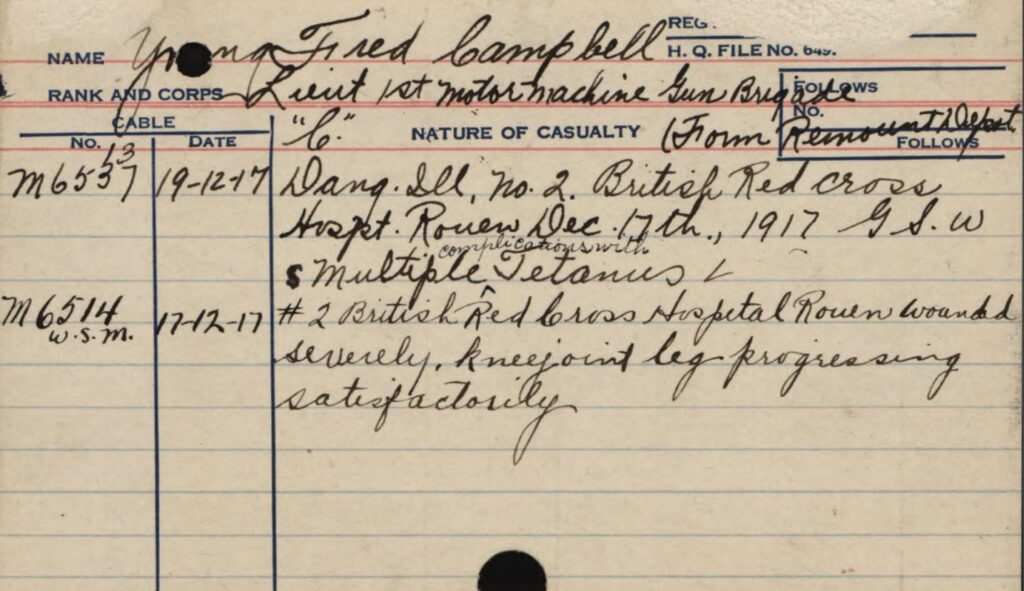Image: notes about Fred’s wounds from his military service file (Library & Archives Canada)
Regimental Number: 49536; 79494
Rank: Lieutenant
Branch: Canadian Machine Gun Corps
Fred was born in Lac La Biche, Alberta on August 24, 1885. As a young man, he worked on the survey of the Northern Alberta Rail. It was at this time that he first came to the South Peace. In November of 1914, Fred enlisted in the Canadian Army. In September of 1916, he received shrapnel wounds to his right ankle. Fred was gassed on August 18, 1917 at Hill 70. He also suffered from multiple severe shrapnel wounds (chest, arm, legs, hand, and shoulder) in October of 1917 at Passchendaele; as a result of these wounds, Fred suffered from tetanus. He had only been back on duty for two days after the Hill 70 injury when he was wounded at Passchendaele. In January of 1918, Fred was awarded the Military Cross and, on January 18, was promoted to Lieutenant. In August of 1918, Fred’s right leg was amputated. X-rays are available on pages 119, 121, and 123 of his service file. When Fred returned to Canada, he traveled back to the South Peace and filed on land at NW 1-71-24-W5 and the eastern half of 2-71-24-W5 (1920). Around 1920, he married Jean Hopkins. In 1968, Fred and Jean retired and sold their homestead to the government to use as a park (Young’s Point Provincial Park). Fred died on September 12, 1971.
Sources: Across the Smoky p. 7; Where the Red Willow Grew p. 303
Soldier Spotlight highlights veterans from the Archives’ online Soldiers’ Memorial. Each week, our volunteers select a remarkable individual to showcase in this blog series. The Soldiers’ Memorial commemorates more than 1,100 WWI veterans and 2,300 WWII veterans from our region. Three dedicated volunteers have contributed over 1,200 hours to this project by researching and writing biographies. Our goal is to have all South Peace soldiers acknowledged for their service. If you know of someone who lived in the South Peace and should be listed on the Memorial, or would like to get involved by researching a local veteran, please contact the Archives.
